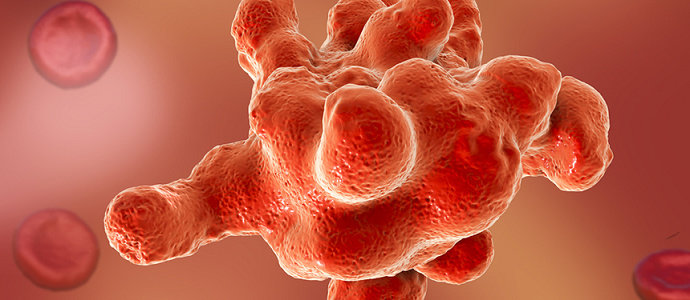

Faced with an adverse colonic environment, the trophozoite changes to the cystic form, better adapted to survival. Invasion of the colonic mucosa leads to dissemination of the organism to extracolonic sites, predominantly the liver. The trophozoite of E histolytica inhabits the large intestine to produce lesions ofĪmebic colitis. (5) The parasite exists in 2 forms: a motile form, called the trophozoite, and a cyst form, responsible for the person-to-person transmission of infection. Ingested red blood cells are sometimes seen in the amoeba cell cytoplasm. A common outcome of this invasion of tissues is a liver abscess, which can be fatal if untreated. From there, it can reach different vital organs of the human body, usually the liver, but sometimes the lungs, brain, spleen, etc. The amoeba can actually 'bore' into the intestinal wall, causing lesions and intestinal symptoms, and it may reach the blood stream. Symptoms can include fulminating dysentery, diarrhea, weight loss, fatigue, abdominal pain, and amebomas. histolytica, as its name suggests (histolytic = tissue destroying), causes disease infection can lead to amoebic dysentery or amoebic liver abscess. When cysts are swallowed they cause infections by excysting (releasing the trophozoite stage) in the digestive tract. The active (trophozoite) stage exists only in the host and in fresh loose feces cysts survive outside the host in water, soils and on foods, especially under moist conditions on the latter. Diverse mammals such as dogs and cats can become infected but are not thought to contribute significantly to transmission.

It is estimated that about 50 million people are infected with the parasite worldwide. It infects predominantly humans and other primates. When symptoms are present it is generally known as invasive amoebiasis.(2) Entamoeba histolytica is an anaerobic parasitic protozoan, part of the genus Entamoeba. Amoebiasis is an intestinal infection that may or may not be symptomatic. It is usually contracted by ingesting water or food contaminated with amoebic cysts.

Amoebiasis is a parasitic infection caused by Entamoeba histolytica.

On a global basis, amebiasis affects approximately 50 million persons each year, resulting in nearly 100,000 deaths. It is the third leading parasitic cause of death worldwide, surpassed only by malaria and schistosomiasis. (3) Amebiasis is a parasitic infection caused by the protozoon Entamoeba histolytica. Gejala-gejala disentri antara lain adalah: Buang air besar dengan tinja berdarah Diare encer dengan volume sedikit Buang air besar dengan tinja bercampur lender(mucus) Nyeri saat buang air besar (tenesmus)(4) There are two major types of dysentery due to micro-organisms: amoebic dysentery, and bacillary dysentery mainly due to one of three bacteria. Additional symptoms frequently associated with dysentery include fever and malaise.(3) Disentri berasal dari bahasa Yunani, yaitu dys (=gangguan) dan enteron (=usus), yang berarti radang usus yang menimbulkan gejala meluas, tinja lendir bercampur darah. PENDAHULUANDysentery (formerly known as flux or the bloodie flux) is frequent, smallvolume, severe diarrhea that shows blood in the feces along with intestinal cramping and tenesmus (painful straining to pass stool).


 0 kommentar(er)
0 kommentar(er)
